What Do Toads Eat? The Ultimate Guide
A true toad is any species belonging to the Bufonidae family within the Anura (frogs and toads) genus. They’re characterized as having dry, bumpy skin and short, squatty legs.
But what do toads eat? What do you feed pet toads and is it possible to feed wild toads so they’ll stick around your garden?
These are the questions I’ll answer in the sections below.
Toads are carnivorous and enjoy eating live prey. They eat insects and small animals.
- Crickets, Locusts
- Flies, Mosquitos, Moths
- Worms, Grubs (mealworms, waxworms, etc)
- Small rodents like mice
- Fish, Tadpoles
- Lizards, snakes
- Other amphibians
What Toads Eat in the Wild
So what do toads actually eat? Well, toads are carnivores which means they eat live prey. They aren’t very big either; most of them getting no larger than 4 or 5 inches in length.
Due to their size, toads can only eat small, living creatures. Still, they eat a large variety of foods. Mostly insects, worms, small fish and reptiles, rodents, and even other amphibians. Below is a more complete list.
It’s important to know that wild toads eat different things depending on where in the world they live.
A toad native to North America will have different options than a toad native to Australia. That’s because the insects native to these regions are different across the globe. Regardless, toads eat the same basic types of food around the world.
Now let’s look at the different types of foods toads eat during the different stages of their life.
A Toad’s Diet During The Different Stages of Life

Photo by: frogpets.com
In this section, I’ll go over the diet of tadpoles, juvenile toads, and adult toads in greater depth.
Keep in mind, this is mostly what toads eat in the wild. If you’re wondering what to feed them in captivity, feel free to skip to the next section.
Tadpoles (Toadpoles?)
Toads begin their lives inside an egg sack; in large clumps or strings of eggs with hundreds or thousands of other baby tadpoles.
Tadpoles are omnivores! Toads become carnivores after metamorphose.
The first source of food for a tadpole is the yolk of their egg sack. Tadpoles will eat most of the yolk and grow large enough to hatch into the water. This can take anywhere between 2 – 4 days depending on the species and weather conditions.
At this point, tadpoles begin swimming around and seeking other sources of nutrition. That nutrition comes in the form of vegetation such as decayed plant matter, larvae, moss, algae, small insects (Like Gerridae), and sometimes worms.
Detritus is defined as dead particulate from organic material. Pieces of dead worms or bugs and decomposing leaves that fell into the water. It all sinks to the bottom of a pond, lake, or stream. This is what tadpoles eat in the wild.
Tadpoles eventually grow legs; first the back legs – then the front legs. Soon after, they absorb their tail. They do not eat their tail but it is a source of nourishment. Tadpoles don’t each much (or at all) while absorbing their tail.
Juvenile Toads
After growing legs, absorbing their tail, and developing lungs, juvenile toads hop on land to begin their lives as terrestrial animals. It’s at this point that toads become carnivores.
Juvenile toads have the capacity to eat much of what an adult toad can eat, just on a smaller scale.
A juvenile toad eats small insects like flies, mosquitos, ants, and the occasional worm. As they continue to grow in size they’re able to eat larger bugs.
- Flies, mosquitos
- Small moths
- Ants
- Fruit flies
- Pinhead Crickets
- Small invertebrates
See the section on feeding toads in captivity for some helpful tips during the juvenile stage. Also, consider checking out this page about the life cycle of a frog if you’re interested.
Adult Toads
As juvenile toads grow in size, so does their appetite. Adult frogs are full-grown, having stronger jaws and a larger mouth. They’re ferocious, too; eating nearly anything they can get in their mouth.
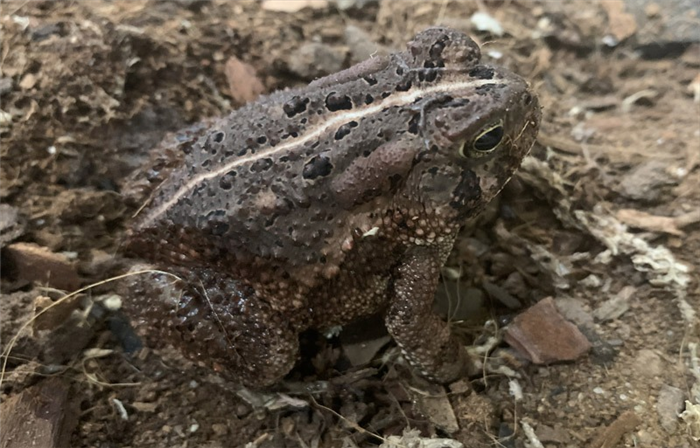
Toads are ambush predators. They burrow into the ground and wait for something to walk in front of them and, using their long tongue, snatch up unsuspecting prey in the blink of an eye.
The length of their tongue varies from species to species, but some of them can reach up to twice their body length or more.
I’ve made a list including all the various types of insects, reptiles, and small mammals that are on the menu for toads around the world. See the list below.
- Crickets
- Flies
- Worms
- Spiders
- Grubs
- Slugs
- Snails
- Mice
- Lizards
- Snakes
- Small Fish
- Other toads and frogs
Large toads have been known to eat small mammals such as mice. Small lizards and even snakes become fair game, too.
An interesting fact about toads is that they have to swallow their prey whole. They don’t chew their food – they swallow it whole. Meanwhile, some frogs have teeth but toads do not.
What Toads Eat in Captivity
Toads in captivity eat all the foods they would in the wild. The only difference is, obtaining insects, small fish, or mice isn’t appealing to most people.
For that reason, toads in captivity are often limited to what you can purchase in a pet store or cultivate on your own. Most people feed them crickets and worms in captivity because that’s about all you can buy in (most) pet stores.
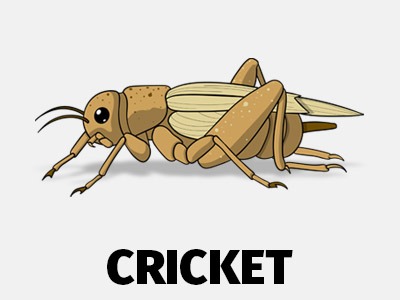
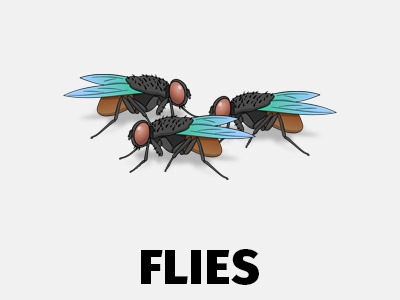
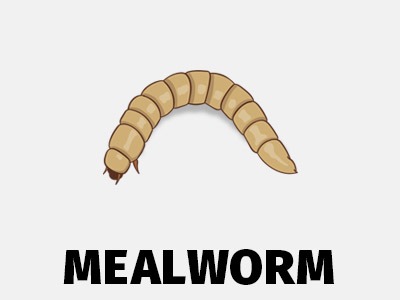
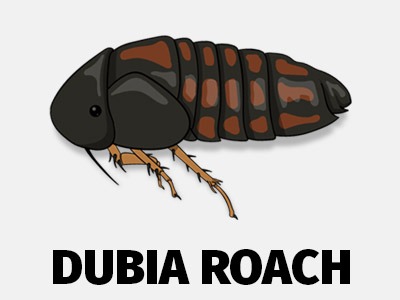
Otherwise, you can go out and catch the insects, small reptiles, and baby mice yourself (kidding). You don’t have to do this. In fact, don’t do this unless your pet toad is native to the region of the world you live in!
In short, you’ll want to feed them the things you can easily obtain from your local pet store.
Here is a list of things toads eat in captivity
- Crickets
- Mealworms, super worms, waxworms
- Earthworms
- Dubia Roaches
- Feeder Fish
Perhaps the best thing you can feed your captive toad is live crickets. Most pet stores raise crickets for the purpose of feeding reptiles and amphibians.
Crickets raised in captivity don’t contain as many nutrients as wild crickets. For this reason, it’s important to gut load the crickets before feeding them to your pet toad.
Dusting the crickets with a calcium and vitamin supplement is highly recommended.
In captivity, toads don’t have access to their natural habitat (which is perfect for them). The insects and little critters they eat are healthy and they’re hopping around in the sun, soaking up UVB.
Ultraviolet B is thought to help reptiles and amphibians metabolize vitamins and calcium. Calcium is important for the bones of your toad and it’s something that can become a health issue if you don’t use supplements.
- Check out our care guide for American Toads for more help!
Tadpoles in Captivity
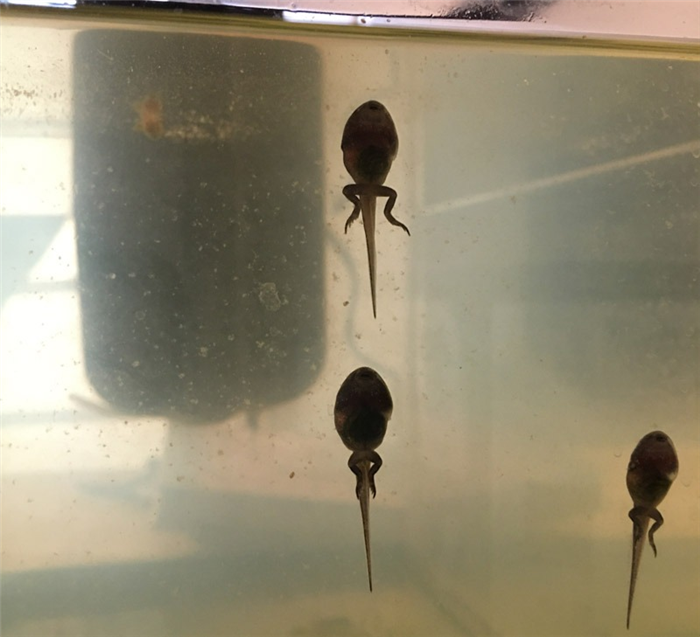
Feeding tadpoles in captivity is a whole topic in itself. It contains a lot of information because rearing tadpoles is tricky. They’re delicate and doing the wrong thing can result in the loss of your tadpoles.
For example, I wrote a giant safe water guide for tadpoles and didn’t even begin to talk about feeding them. Anyway, I’ll lightly cover the topic here but I encourage you to read more about this subject if you’re raising tadpoles!
Tadpoles in captivity do well eating boiled baby spinach and (some) commercial tadpole foods.
- Boiled baby spinach leaves
- Commercial tadpole food
- Boiled eggs
- Decayed plant matter
In my experience, tadpoles preferred baby spinach leaves. I boiled them, let them cool, and placed a small amount into their tank. In addition to the baby spinach leaves, I experimented with adding tadpole pellets.
I got mixed results with the tadpole food and 90% of the time the tadpoles simply ate the boiled spinach leaves.
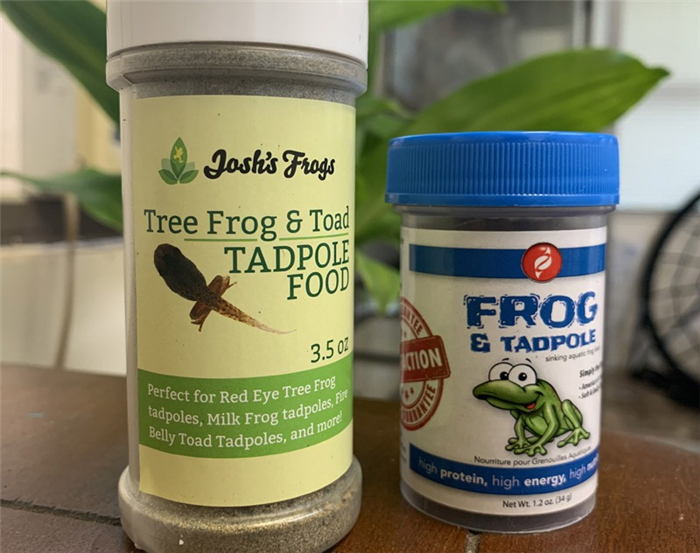
Out of the two brands in the picture above, Josh’s Frogs tadpole food (link goes to Amazon) performed the best. Both worked well. Still, as I mentioned earlier, baby spinach leaves were the preferred source of food for the last batch of tadpoles I raised.
Feed tadpoles 2 – 3 times each day and perform partial water changes as needed.
It’s important to clean up the leftover food after feeding. In addition to this, don’t overfeed them! Any leftover food will only cause you to have to clean the water more often.
Juvenile Toads in Captivity
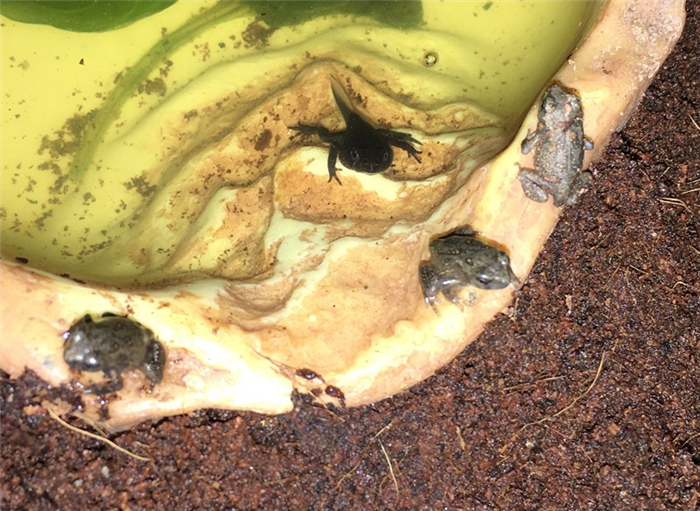
Whether you’ve successfully raised toads through the tadpole stage or bought a young, exotic toad at a pet show, it’s time to learn what to feed them!
Juvenile toads aren’t fully developed yet – they still have a small mouth. Due to this, you must not feed them insects that are too large! There is an easy rule to follow when feeding all frogs and toads.
Feeder insects should not be bigger than the distance between a toad’s eyes.
Simple, right? If the distance between your toad’s eyes is about 1/4″, then you’ll want to get crickets no bigger than 1/4″ in length. Listed below are my two favorite insects to give young toads.
- Pinhead crickets
- Wingless fruit flies
- Small invertebrates
Feed juvenile toads every day or every other day. You have to experiment with the number of crickets (or flies) you give them each feeding.
5 – 6 pinhead crickets may suffice for a small juvenile toad but not one nearing maturity. As they grow in size, they need bigger crickets or more pinhead crickets.
Watch your toad and see whether or not they eat all the crickets (or flies) you give them within an hour or two. If they eat all of them, you can increase the number of insects you give them on the next feeding.
Common Feeding Mistakes
There are several things you should avoid doing when feeding a pet toad. These mistakes are common and often result in the declining health of your beloved pet.
- Using wild-caught insects
- Not utilizing supplements
- Feeding dead insects
- Overfeeding / Underfeeding
- Using the wrong size of feeder insects
Using wild-caught insects (the ones you can find in your backyard) is a common mistake made by those new to the hobby. The reason this is a bad idea is that it can lead to a parasitic infection. The reason? Little parasites in the bugs can have a negative impact on toads that aren’t native to the surrounding area.
Not utilizing supplements is another mistake. Because your pet frog doesn’t have access to the large variety of foods they would have in the wild, their health can suffer. The crickets and mealworms you get from the pet store are typically low in nutritional value. That’s why it’s important to gut load feeder insects and dust them with vitamin and calcium supplements!
Most toads won’t knowingly eat dead feeder insects. They thrive on healthy, living insects and small animals!
Toads are known to have ferocious appetites. They eat and eat and eat. Overfeeding them is a real possibility. Obesity can lead to a shorter lifespan if gone untreated.
Finally, feeding a juvenile toad a large cricket can be problematic. Not only will the toad try to eat the cricket but it could injure itself (or choke) while trying to swallow something too big.
Some Toads Are Cannibals
If you look back to the section with the bullet list of foods, you may remember seeing “other toads and frogs”. Well, it’s true.
Some toads, like cane toads, are cannibalistic. They eat their own kind. Large, full-grown toads sometimes eat smaller toads and frogs. If they’re hungry and it will fit in their mouth – it’s dinner.
Another species known for eating its own kind is the Pacman Frog. While they’re not toads, I felt it’s worth mentioning because they’re extremely popular as pets.
That doesn’t mean every toad is a cannibal – only some of them are. Cane toads, as I already mentioned, are one of them!
How Toads Eat
How toads eat is more fascinating than what they eat (in my opinion). I’ll quickly cover the basics.
- Their tongue deforms and shoots out of their mouth in the blink of an eye. The tongue is coated in a sticky, honey-like spit that causes bugs to stick to it. Once the bug is stuck, the toad’s tongue springs back into its mouth like a bungee.
- After the toad retrieves the bug into its mouth, it’s time to swallow. This is where it gets more interesting. The toad uses its tongue AND eyes to move the bug down its throat. That’s right, toads use their eyes to swallow food! Their eyes are used to push the food down into their throat.
Toads close their eyes while swallowing and often just before they attempt to catch prey using their tongue.

What Do Toads Eat? Infographic by FrogPets.com
Feel free to share this infographic on social media. You may use it on your website or blog, as long as it links back to this page.
TLDR; What Do Toads Eat?
A toad will eat nearly anything it can fit in its mouth. They become carnivores after metamorphosis, eating live insects and invertebrates like crickets, flies, worms, and spiders. Large toads are capable of eating small mice, lizards, snakes, and other amphibians.
Many true toads, those in the Bufonidae family, burrow into the dirt and wait for their prey to come to them; they are ambush predators. Their quick reaction time and long tongues help them to reach out and grab their target.
If you’re reading this because you’ve recently acquired a new pet toad, please heed my advice and use reptile vitamin & calcium supplements! Dusting feeder insects with calcium and vitamin supplements will help keep your toad’s bones strong.
Interested in keeping a toad as your pet? Check out our beginner’s guide to keeping frogs and search for a care guide that teaches you everything you need to know for proper toad husbandry!
Anyway, I hope this information was helpful to you! If you have any questions, feel free to ask in the comment section below.
48 Comments
Concerned juvenile toad owner.
Hi we acquired a tadpole from a swimming pool. Somehow it survived and recently morphed into a ver tiny toad the size of my pinky fingernail. It seems to be doing well, but I am concerned that it may not be eating. I have flightless fruit flies in with the toadlet, but they don’t seem to be eaten and with the “dirt base I have in there I can’t tell if any have died or not. The toadlet is too tiny to eat anything larger. Out of concern I have been putting some of the tadpole/frog food pellets on the toadlet’s rock. The pellets seem to be disappearing though I have noticed the fruit flies going after them though I would be surprised if they could actually eat them. Is it possible the toadlet is in fact eating the pellets? I would hate for the toadlet to be unknowingly starving, but when I tried putting it in a smaller clear container with the fruit it ignored them even when they crawled on it. Any advice or suggestions would be greatly appreciated. We are in this for the long haul and want to keep the toadlet as a pet. Thank you.
I have a toad in my courtyard.
It cannot get out. I have constructed a small pond like area for it as well as a cozy toad abode, and access to sun and shade and tree roots for digging down in. I have a garden full of plants and do also have worms and ants and currently midges or gnats. Is that enough to keep it happy and healthy?
I would imagine so. It’s an open courtyard, yes? If so, there should be a number of wild insects in the area to keep the toad healthy!
My tadpoles will soon mature into toads and I have been wondering if it will bo good to feed them ants and termites
Hey, Kim! Wingless fruit flies or pinhead crickets are two popular options and you don’t have to worry about them.
I acquired a wild pet toad whom I think is a girl and is a southern toad. I am unsure how much to feed her and how many times a week as I am unsure of her age. She is not very big right now so I’m thinking she is only a couple months to a year. Can I feed her human food some too? And if so what kind?
I don’t recommend giving your toad human food. Stick to live insects like crickets, Dubia roaches, mealworms, etc. Here is more information on what to feed frogs.
found a really small toad and i know my mom wont let me keep him i put small small pieces of fruit and im going to see if it eats it what should i do next?
Sorry your mom won’t allow you to keep one! Toads typically eat live prey. I recommend waiting until your mom will let you keep one, then do a bunch of research on how to properly care for the type of frog you’re keeping. Then go out and get one! Best wishes and good luck!
I have a smallish road that we found last week. I gave him 3 crickets and they were gone in a few hours. I picked up a few more crickets today and put them in his habitat. Do toads know when stop eating? Should I take the remaining crickets out?
Some amphibians stop eating when they’re full. Others, not so much. Toads are prone to over eating so it’s a good idea to monitor their intake. If they’re getting overweight, feed them a few less crickets!
My stepsister found a big toad and 3 small toads and she doesn’t know what to feed them
Show her this page! You might find the information on this page helpful as well.
I found a toad in my backyard and loves my Jacuzzi…I found his home underneath a cement slab that my water pump is placed on…he gives me the goose bumps when I take out my jacuzzi and don’t know what to do with it…I tried to catch it but got away.
Hey Maria! If he’s bothering you, I recommend getting a small net. That should help you catch him. You can relocate him somewhere out of your yard and maybe he/she won’t come back lol.
I have one big toad and two small toes what do Feed them
Sorry I meant to say two small toads One big toad
Most of that information is on this page. Also, check the American toad care sheet and “what do frogs eat” For more helpful information.
Hes also a baby
I’m a teen,and me and my little brother caught a toad is small and fits in one Palm,I’ve feed it ants and a beetle it at the ants quick but the beetle has been there for a couple hours…I thought it might be full but I only gave it about 6 ants…but they were larger…And I have a piece of raw chicken dangling on a string in the cage George ( toad) will nip at it but not eat it… Do you have any other explanations/advice? And do frogs eat rice? If so what kind cooked,raw,jasmine,ect
Please do some research on keeping frogs. Those found in the wild have a hard time adapting to captivity. Also, you will benefit from knowing what frogs eat.
Do toads have warts on their tounges?
Is it possible for a toad to get tooo much calcium?… I mean if a toad is eating only wild outdoor bugs just fine, would dusting in calcium be needed ? And not getting sunlight… matters. Would that shorten his life span.. ? Or can he become ill.?
I have a toad that won’t eat crickets, and I ordered meal worms but they won’t arrive for a while. I need to feed him, should I give him fruits and vegetables? And if so, what kinds?
It’s rare to get toads to eat fruits or vegetables. Should you try, make sure they’re chopped into small pieces. Small enough for the toad to eat. I’m not sure why he/she won’t eat live crickets. Live crickets or meal worms are one of the best options. They most likely won’t eat dead bugs either.
I recently got a small toad, but not super tiny. How often should I feed her, and what size should the mealworms be?
hay i got a big toad i found it on my porch stair dont know wht it is
Recently, my kids brought home a toad, and I’m not sure how old he is, or what kind he is
You could probably narrow it down to a handful of different species based on where you live in the world.
I have a small toad that’s red and I don’t know what to feed it
Feed him pinhead crickets, fruit flies, or tiny meal worms.
ok question i have 4 baby toads bout month old and ive run out of crickets what can i feed them out of desperation while waiting for crickets?
Wingless fruit flies is the best option I can think of. Also, you could try small pieces of worms.
I have a toad that has bumps on his body and he is grey and blackish.
My daughter found a smaller American toad a few days ago. First, we tried meal worms from petco , but the toad would not eat. So next I got a small earth worm and a good size grub. He ate those right up. The following day we couldn’t find any. We went back to the pet store and were able to find red wrigglers. They look a lot like earthworms, but skinnier…. were waiting for toad to eat. If toad doesn’t eat… is it because toad only wants outside wild insects??
They eat a variety of insects in the wild. The large variety helps them stay healthy. I’m not entirely sure why it wouldn’t eat the mealworms. One thing you can do is check your local Walmart’s fishing section for live worms.
I recently caught a big toad in my yard and my son wanted to keep him as a pet. So far it’s been going well, but I have a question about his diet. I’ve recently started feeding him wasps that get into the house by slapping them with my hat and putting them in the aquarium before they regain their mobility. He loves to chase them down and eat them, but I was wondering if wasps could hurt him by stinging his insides, or by ingestion of the wasps toxins. I haven’t found any answers online so any advice would be greatly appreciated.
Wow that’s a great question. I’m not sure to be honest.
I don’t know a lot about wasps but I bet their sting works similar to a snake or spider (in terms of deliver). They’re venomous – not necessarily poisonous. Venom is injected via a stinger, fangs, etc. Poison is absorbed or consumed.
Like you said, it’s stinger could be problematic. I’ll try and find some info on this subject as well.
In the meantime, I’ll tell you that captive frogs almost always require supplements (vitamins and calcium) to remain healthy. This is because they don’t have access to the wide variety of things they would normally eat in the wild.
“Dusting” live crickets with reptile vitamins and calcium is common practice for toads and frogs in captivity. It’s especially important for their bones.
Is it possible for a toad to get tooo much calcium?… I mean if a toad is eating only wild outdoor bugs just fine, would dusting in calcium be needed ? And not getting sunlight… matters. Would that shorten his life span.. ? Or can he become ill.?
That’s a good question. It’s a topic that doesn’t have a lot of accurate information. I’ve read studies about reptiles eating crickets dusted with calcium powder and also being exposed to UVB lights. The outcome was interesting. The reptile exposed to more D3/calcium actually ate fewer crickets. This suggested that the test subjects that weren’t getting as much calcium were trying to make up for it by eating more crickets. I’m sorry I can’t be more helpful but I hope this helps.
I have a toad and found him on my Trampoline and his name is Joe Roo Boggsapenny and yeah.
Thank u for the info I needed to no what to feed my new juvenile toad named rascal,he’s so small
Me and my grandparents found two toads in the basment shower and they have been with them for about two months and one recently dissapered. We’re pretty sure they are girl and boy what do you think happend to the one that vanished? and also the one here is not scared of us any more should we let it go hibernate or can it survive in the house? if so what do we feed it?
Are there any insects..poisonous or predatory or otherwise toward toads? Are there insects he should never eat?
Hi I caught a toad yesterday and it is smallish I keep it out Side and me and my sister found that king George (toad) has a hurt hand and it was bleeding question: Will it die?
Leave a Reply Cancel reply

Hey! I am the founder of FrogPets.com! I’m an amphibian enthusiast with a passion for helping like-minded people take better care of their pets. Click here to learn more!
What Toads Eat In the Wild & Captivity: Expert Food List & Diet Guide
Some people may believe that toads have a face that only a mother could love, but we adore them!
Their cute, beady eyes, warty green skin, lazy take on hopping, their ravenous appetite, and their willingness to shovel anything that fits into their mouth are relatable and adorable. They’re like the outgoing, clumsy cousin of frogs (opens in a new tab).
Luckily, it’s pretty easy to fulfill your toad fix.
Perhaps you’re hoping to offer your wild toad neighbors a snack, or even bring them inside and give them a taste of the good life – room service and food delivery, galore.
In any case, you might be interested in finding out about their favorite foods.
Before we dive in, let me say that an article about what they won’t eat could’ve been even shorter than this list. In fact, it’s no wonder so many frog lovers and pet owners decide to name their toads (and frogs) after their favorite foods!
But, I digress, it’s time to find out more about the diet of these little piggies of the anuran world!
What Toads Eat In the Wild
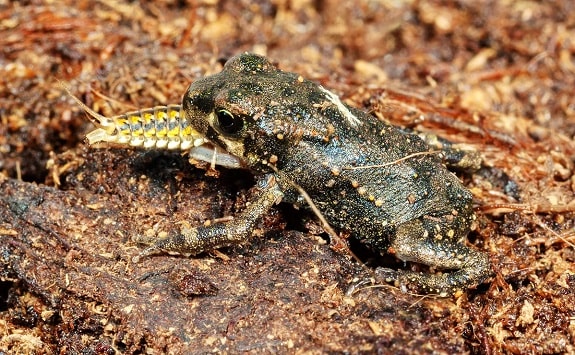
Wild toads are referred to as ambush predators. This means that they don’t actively track and hunt their prey.
Instead, they find a comfortable spot where they can blend into their surroundings, avoiding detection by their prey.
Their excellent vision lets them lock onto small movements made by their prey, then its a matter of waiting until it gets close enough.
You may know toads to be slow and sluggish, but you will soon see otherwise when you see your warty pal spring into action.
Toads have no teeth or ability to chew, so they must eat their prey whole.
Luckily for them, their mouths are quite large – so they can eat rather large whole prey.
Insects
- Beetles
- Bees
- Crickets
- Flies
- Locusts
- Mealworms and other grubs
Insects make up most of a wild toad’s diet.
If it can fit into their mouth (and most insects can), they’ll eat it. Flies can be particularly enticing to some toads.
Gastropods
Gardeners usually welcome toads to their yards with open arms and hearts.
Snails and slugs can quickly destroy a green thumb’s hard work, but a healthy population of toads will keep the gastropods in check.
Annelids
- Earthworms
Have you ever seen earthworms come to the surface after a prolonged, hard rain? Well, from now on, you can just refer to this phenomenon as a “toad buffet.”
You can see just how quick toads are to snatch up a tasty worm for yourself by watching the video below!
Rodents
- Mice
- Voles
- Baby rats
This might be the second most surprising category of a wild toad’s diet – but it’s true!
These opportunistic predators will happily eat small mice, voles, and even baby rats in any nests that they might find. Again, anything they can fit in their mouth is fair game.
Arachnids
- Spiders
- Scorpions
Arachnophobes delight! Welcoming toads into your yard may help you keep your resident population of eight-legged creepy crawlies at bay.
Cannibalism
- Toad eggs
- Toad tadpoles
- Juvenile toads
Remember how we said that rodents are the second most surprising category? Well, here’s the first place winner.
Toads really don’t care – if it moves, it is delicious. A toad will gleefully devour its own offspring if it gets the chance.
⭐️ Fun Fact: Did you know, all toads are frogs, but not all frogs are toads? It’s true! We’re breaking down this popular (but unintuitive) saying in plain English once and for all. Discover for yourself what exactly this saying means here .
What Toads and Frogs Eat (In Captivity as Pets)
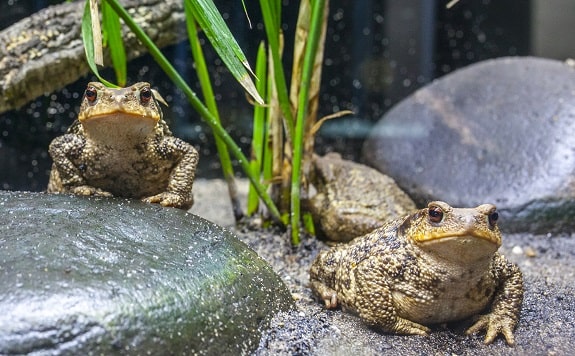
Now you know what your wild toad buddies are dining on in your yard – but what about if you want to buy a quick snack for them, or a full five-course meal for your captive anuran?
Luckily, most pet stores are well-stocked with live, canned, and dried toad delicacies. You can even grab some grubalicious snacks from your local grocery, fishing, or gardening supply store
Many toads, especially toads that grew up in the wild, will only be interested in living, moving food items.
However, some captive-born toads and even smart, hungry wild-caught toads will go for things meant for human consumption like chunks of meat.
Here’s what to look for, depending on where you’re shopping and what you’re shopping for, in order from easiest to hardest to find.
Pet or Reptile Store
Live
These food items move around, so they are visually enticing to almost all toads.
- Crickets
- Mealworms
- Superworms
- Roaches
- Hornworms
- Feeder Minnows and Guppies
- Pinky Mice
Canned
Canned food has the disadvantage of not wiggling around, but they retain more tempting odors than their dried counterparts.
- Crickets
- Mealworms
- Grasshoppers
- Snails (de-shelled)
- Shrimp
- Superworms
- Black Soldier Fly Larvae
- Silkworms
- Roaches
Dried
Dried insects are convenient and cost-effective, but many toads just won’t be interested in them. Still, it doesn’t hurt to try.
Bait Shop
Live fishing bait can make the perfect meal for your toad, and they offer some varieties of food that you may not be able to find in a pet store.
- Red worms
- Nightcrawlers
- Waxworms
- Mealworms
- Butter worms
- Green worms
Gardening Supply Store
Again, an outside-of-the-box source of toad snacks in the form of earthworms that are commonly used for composting.
Grocery Store
In a pinch, you may even be able to find suitable food for your toad at the grocery store.
Just keep in mind that toads primarily hunt by sight, so they may be completely uninterested in a slice of meat that doesn’t move, doesn’t smell like their usual prey, and doesn’t look like their usual prey.
Here are some things you could try:
- Ground beef
- A small chunk of beef or pork
- Beef liver
- Beef heart
- Tilapia or other seafood
- Soft fruits and vegetables
Other Nutritional Requirements of Toads
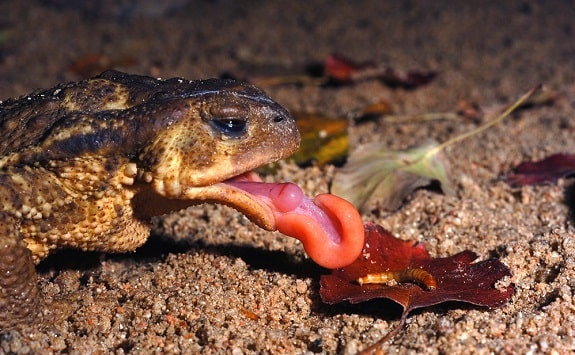
Offering an occasional free snack to a wild toad is perfectly fine. In fact, it’s an excellent opportunity to observe their feeding behaviors, entertain and teach children about these cute creatures, and interact with nature.
Providing a proper diet to your captive toad is slightly different. It requires a little more thought, planning, and effort.
Since pet toads don’t have access to the same diet variety that they have in the wild, and since farm-raised bugs have lower nutrient profiles than insects in the wild, a captive toad fed only a diet of crickets directly from the pet store can quickly become deficient in specific nutrients.
You can combat this by offering as wide of a variety of food as you can, gut-loading your crickets and roaches with fresh, healthy fruits and veggies, and dusting all feeder insects with vitamin and mineral powder.
Typically, grubs like mealworms, super worms, and black soldier fly larvae contain more nutrients than crickets, but they are also higher in fat.
It’s not unheard of for these little hopping garbage disposals to eat themselves into obesity when given a chance, so keep an eye on their warty waistline!
UVB Lighting
It is still debated whether or not toads require UVB lighting, but it is undoubtedly beneficial for their digestion and provides a helpful Vitamin D3 boost.
Water
As far as water goes, it is always ideal to offer your toad bottled water rather than tap water.
Toads are amphibians, and amphibians absorb water through their skin.
Tap water can contain harmful chemicals and heavy metals that might make your toad sick.
Fruits and Vegetables
Finally, while some toads will eat soft fruits and vegetables, it is definitely not necessary in their diet. In fact, they are strict carnivores.
If your hoppin’ pal enjoys fruits and vegetables, they’re okay to offer, but consider them to be a treat and feed them accordingly.
What Do Toads Eat?
Did you know that all toads are frogs, but not all frogs are toads? This little fun fact often throws people for a loop, but it’s true. In addition, there’s no actual scientific distinction between toads and frogs. This can lead to a lot of confusion when comparing a frog versus a toad. The term toad is generally used to refer to any frog within the family Bufonidae. Most toads possess dryer, more leathery skin and shorter hind legs compared to most frogs. In addition, toads are generally more terrestrial than frogs and spend a greater portion of their lives on land. You can find true toads in various environments throughout the world aside from polar regions. Due to their widespread distribution, toads feature prominently in folklore and popular culture. Yet, many people continue to misunderstand them. For example, can you answer the question, “what do toads eat?”
In this article, we’ll attempt to put this confusion to rest by examining the dietary habits of toads. We’ll start with a discussion of what toads commonly like to eat. Then, we’ll move on to a conversation about how toads hunt and forage for food. Next, we’ll compare the diets of wild toads versus pet toads. Finally, we’ll end with an overview of the diet of baby toads. So, let’s hop into this discussion and answer the question, “what do toads eat?”
What Do Toads Like to Eat?
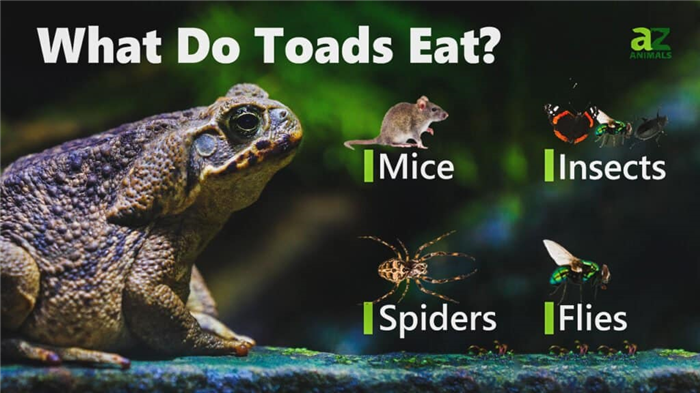
Toads are primarily carnivorous and prey on mice, insects, spiders, and flies.
Generally speaking, toads will eat pretty much anything that they can stuff into their mouths. That said, they are predominantly carnivorous, meaning that they mostly eat animal matter. Their diet can vary depending on the environment and the type of prey that is readily available. Additionally, each species of toad has different dietary requirements and tends to lean toward some prey over others. It should also be mentioned that toads eat different foods depending on their age. As tadpoles, they are more omnivorous and eat a wide variety of plant matter in addition to animal matter. It’s only once they mature that they become more carnivorous. Still, we’ve gone to the trouble of listing 10 foods that toads frequently like to eat. These are the foods that you can commonly find in a toad’s diet, albeit at different life stages. These foods include:
- Insects
- Spiders
- Snails
- Slugs
- Birds
- Small mammals
- Reptiles
- Other amphibians
- Algae
- Phytoplankton
How Do Toads Hunt and Forage For Food?
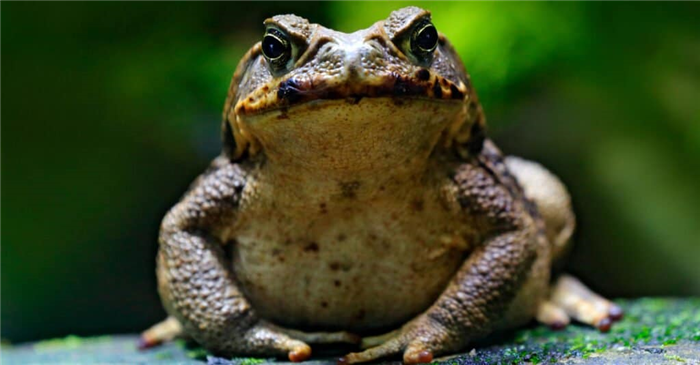
Toads possess exceptional senses of eyesight and smell.
Toads use their senses to hunt and forage for food. That said, they use some more than others in their search for their next meal. One of a toad’s most important senses when it comes to finding food is its keen sight. They possess excellent vision that is so acute they can see in color even at night. They use their sight to detect moving prey and to hone in on their target. On top of their keen sight, toads also have a powerful sense of smell. However, evidence suggests that they don’t often rely on smell for finding food, but mostly to mark out territory. Toads also have a keen sense of taste and will reject foods they don’t like. In addition, they are quite sensitive to touch and don’t generally like to be handled too much. However, they don’t rely on taste or touch much to find food.
Toads employ different hunting styles depending on the type of toad species. Most toads are active at night when insects and other animals come out to feed. Unlike frogs, toads do not really hop, but rather run on their legs. As such, some toads prefer to chase after their prey. For example, Natterjack toads will run after their prey before roping up their target with their long, sticky tongues. Meanwhile, other toads evolved to use ambush tactics when hunting. These toad species will burrow themselves in the ground and wait for prey to wander past. Once the prey gets too close, the toad will then dart out and snap up its prey. While some toads use their long tongues to snag prey, others do not possess such a feature. Instead, these toads simply walk up to or pounce upon their target and swallow it whole.
What Do Toads Eat in the Wild?

Toad’s will eat pretty much whatever they can catch in the wild.
In the wild, toads will eat pretty much anything that they can catch with their tongues or their mouths. When it comes to prey, they aren’t exactly selective, although they do prefer the taste of certain foods. Overall, insects and other arthropods make up the bulk of a toad’s diet. Some insects and bugs that toads commonly eat include centipedes, flies, crickets, grasshoppers, worms, and beetles. They’ll also scarf down snails, slugs, and spiders with relish. The larger the toad, the larger the prey it will target. Ergo, fully mature, large species will also hunt for prey such as mice and rats. Some large species will eat reptiles including small snakes and lizards, and may even prey on other frogs or amphibians. On occasion, toads will prey on small birds and their eggs. Many toads will also eat small fish, especially when near water or as juveniles.
What Do Pet Toads Eat?
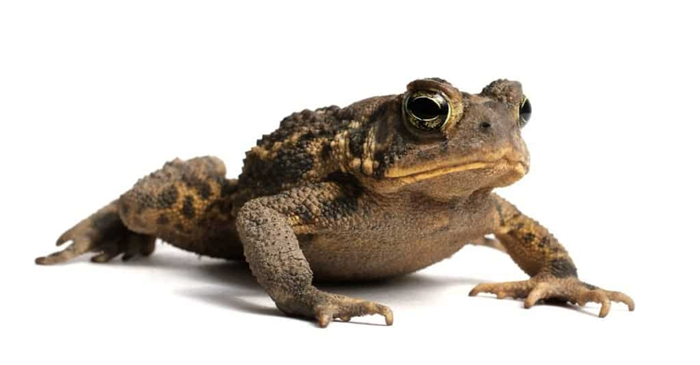
Your should feed your pet toad mostly insects and other arthropods.
Michiel de Wit/Shutterstock.com
Just like frogs, toads make popular pets for both amateur and serious enthusiasts. In order to care for your pet toad, you’ll need to know how to feed it a balanced and healthy diet. Overall, you’ll want to feed your pet toad mostly insects and arthropods. You’ll want to purchase commercially raised insects, as the ones in the wild may carry parasites or be exposed to pesticides. Toads generally only eat live prey, so all insects should be fed live. Some common options include crickets, grasshoppers, and mealworms. You can also provide your toad with flies, moths, or ants. Many people who keep toads as pets also introduce supplements into their toad’s diet so they get enough minerals and vitamins. Calcium in particular is a popular pet toad supplement. Make sure to regularly monitor your toad’s eating habits and remove uneaten insects or food periodically.
What Do Baby Toads Eat?
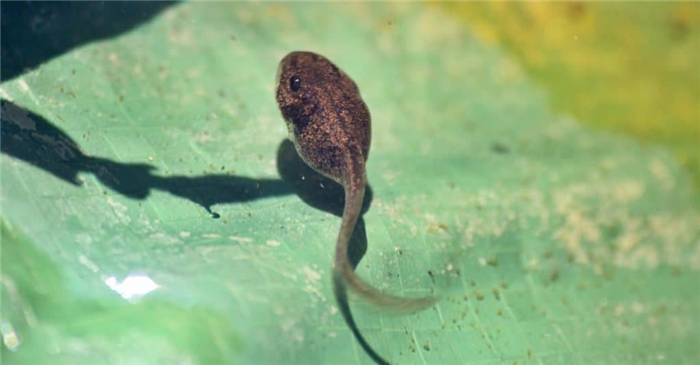
Tadpoles are omnivorous and will eat both plant and animal matter.
Baby toads, also known as tadpoles, are the infant life-stage cycle of toads. Before they’re born, tadpoles begin their lives as eggs. Toads predominantly lay their eggs in water, which is where the tadpoles emerge when they’re born. Tadpoles remain in the water until they evolve into juvenile toads. They are omnivorous and will eat insects, small fish, algae, and phytoplankton. Common prey that tadpoles eat include insect larvae, fruit flies, and small worms. Some tadpoles will also engage in cannibalism and eat other tadpoles. As they mature, tadpoles begin to develop the features of adult toads. Once they become juveniles, their diet becomes more carnivorous, and they’ll begin to eat larger prey. If you’re raising tadpoles, you’ll want to feed them a good algae supplement, along with some small insects. You can also introduce a little boiled egg, leafy greens, or fish flakes.
Toads
Many people get confused between frogs and toads, so here are a few key differences:
- Toads have dry warty skin and shorter legs than frogs
- Toads crawl and frogs move in short jumps.
- Frogs have a more angular head and shape compared to toads
- Only frogs have a dark patch behind their eye
- Frogs lay their spawn in a clump, whilst toads lay a long string of spawn.

Common Toad or Natterjack Toad?
There are distinctive differences between the two species:
- Adult female toads grow to 13cm, whilst Natterjacks rarely exceed 9cm
- Common toads have striking coppery eyes, whilst Natterjacks have distinctive yellow-green eyes, veined with black.
- Natterjacks often move by rapid walking or running
- Natterjacks have a central yellow stripe running lengthwise down the body with speckled orange/red markings.
- Common toads have of-white underside with darker flecks than the Natterjacks grey speckles.
Toad Information – Where do toads live?
Common toads are found all over Britain, and spend more time on dry land than frogs and may remain in one area all summer. The Natterjack has a very restricted range and is only found at a few coastal dune, saltmarsh and inland heath sites in Britain.
By mid-October, most toads and toadlets have retreated to dry banks, holes used by small mammals, compost heaps, amongst dead wood, under garden buildings and other places offering shelter. They will stay in these sites through the winter, but may take advantage of mild patches of weather to forage.
Wildlife World sells specifically designed Toad and Frog Houses called Frogilos which offer a safe retreat away from predators.

Where do toads breed?
In the spring, males are usually the first to emerge from their over-wintering sites and make their way to their breeding ponds. Toads have a phenomenal homing instinct and will travel through all sorts of obstacles to reach the breeding site.
Some female toads will arrive at the breeding pond carrying a mate, but others arrive alone and are quickly swamped by the waiting males and at times when there is a shortage of females, one female may be swamped by a number of males, creating a ‘toad ball’. This scenario is often fatal to the female toad, who is drowned in the furore.
Toad eggs are encased in jelly and laid over a 24hr period in a string around submerged weeds. A string of up to 7m in length can contain over 4000 eggs.
After 14 days the jelly disintegrates and the tadpoles swim free, and continue to develop in the pond for up to 85 days. They will leave the pond when they no longer have tails, usually after rain.
What do toads eat?
Toads have huge appetites and have always been considered the gardener’s friend. They will pretty much swallow and living animal that they can manage, which includes caterpillars, beetles, slugs, spiders, snails, woodlice, ants, and even larger prey like newts, young frogs and even small mice.
Toads can become very tame and friendly and as such can be offered titbits such as live mealworms. With regular feeding they can even be encouraged to come to you when called!

What predators do toads have?
The toad has a defence mechanism against many predators where it secrets a foul tasting toxin from its skin glands as a white milk when threatened. This substance is highly unpleasant to any predator that tries to mouth a toad, but some predators are not deterred. Hedgehogs, stoats, weasels, rats and corvids such as crows and magpies are on the list of predators. Dogs are frequent killers of toads, but pay the price by discovering that toads don’t taste too good, sadly at the expense of this valuable amphibian.

Threats to British Toads
The main threats to toads in the UK are the loss of breeding ponds and disruption of migration routes. Road building and development have created many obstacles for toads travelling to their breeding sites, as well as the loss of these ponds as a result of house building and other developments.
If you have a garden you can help toads in the following ways:
Install a wildlife pond with a minimum depth of 2ft and with sloping sides so that breeding toads can get in and out easily.
- Create wood and stone piles near ponds to offer toads refuge.
- Avoid keeping tadpoles in small containers which can kill them – watch them in the pond instead, where they will be much safer and you can enjoy their development.
- Never move toads from one area to another – this can spread disease and the new site may not be ready for the toads – if you provide the right habitats for them, they will come when they are ready!
Read more on our Frog and Toad Product page where you can buy Field Guides and Frogilos to keep your garden visitors happy.
Toads
Status: Not Listed

Like frogs, toads are amphibians. They differ from most frogs because they have dry skin, warts, crests behind the eyes, and parotoid glands. The parotoid glands produce a poisonous secretion that helps the toad defend itself from predators. This substance, called a bufotoxin, can cause death in small animals and allergic reactions in humans. Toads have other ways to avoid being eaten too. If they’re brown or green in color, they can blend into their surroundings and escape detection. If brightly colored, they warn predators to stay away because they’re poisonous. Toads also puff up their bodies in an attempt to look bigger and inedible if a predator is nearby.
The smallest North American toad is the oak toad (Bufo quercicus), which reaches a length of only 1.3 inches (3.3 centimeters). Cane toads (Rhinella marina) are the largest toads and grow up to 9 inches (23 centimeters) in length. But a massive cane toad caught in Australia, nicknamed “Toadzilla,” has been described as the size of a small dog!
Many toad species live throughout the United States. Toads are found on every continent, excluding Antarctica. Adult toads generally prefer moist, open habitats like fields and grasslands. The American toad (Anaxyrus americanus) is a common garden species that eats harmful insects and can be seen in backyards in the Northeast. Predators of toads include snakes, raccoons, and birds of prey.
Like frogs, most toads eat insects and other arthropods. However, some species eat reptiles, small mammals, and even other amphibians.
Each species of toad has a unique call. Males use their call to attract females for mating or to keep other males away from their territory. After toad eggs are fertilized, most hatch into tadpoles before becoming fully grown adults. Instead of legs, tadpoles have tails for swimming and gills to breathe underwater. As time passes, the tail becomes smaller and smaller until it eventually disappears. At the same time, the tadpole grows legs and loses its gills. Once this metamorphosis stage is complete, the adult toad is ready to live a terrestrial lifestyle. Not all toads (or frogs) have a tadpole stage. However, all amphibians require an unpolluted source of water to reproduce. The common toad (Bufo bufo) lives up to 40 years, but most toad species live about 5 to 10 years.
Several toad species are federally listed as endangered or threatened. The biggest threats to toads are habitat degradation and invasive species.
Touching a toad will not cause warts—however, the bufotoxin found on its skin can cause irritation.
Cleveland Museum of Natural History
Northern Prairie Wildlife Research Center, United States Geological Survey
